1-(5-hydroxyhexyl)-3,7-dimethyl-purine-2,6-dione
- CAS NO.:100324-81-0
- Empirical Formula: C13H20N4O3
- Molecular Weight: 280.32
- MDL number: MFCD00867573
- SAFETY DATA SHEET (SDS)
- Update Date: 2024-11-15 19:19:13
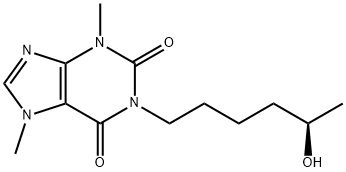
What is 1-(5-hydroxyhexyl)-3,7-dimethyl-purine-2,6-dione?
Chemical properties
White Solid
The Uses of 1-(5-hydroxyhexyl)-3,7-dimethyl-purine-2,6-dione
A major metabolite of Pentoxifylline. Methylxanthine that inhibits production of phosphatidic acid during the inflammatory response. Immunomodulator
The Uses of 1-(5-hydroxyhexyl)-3,7-dimethyl-purine-2,6-dione
A major metabolite of Pentoxifylline. Methylxanthine that inhibits production of phosphatidic acid during the inflammatory response. Immunomodulator.
What are the applications of Application
(R)-Lisofylline is an immunomodulator and metabolite of Pentoxifyline, it inhibits phosphatidic acid production
Definition
ChEBI: (R)-lisofylline is a 1-(5-hydroxyhexyl)-3,7-dimethyl-3,7-dihydro-1H-purine-2,6-dione that has (R)-configuration. A synthetic small molecule which was under development for the treatment of type 1 diabetes mellitus. It has a role as an anti-inflammatory agent and an immunomodulator. It is an enantiomer of a (S)-lisofylline.
brand name
ProTec (Cell Therapeutics).
Biological Activity
lisofylline (lsf) is a potent anti-inflammatory agent. lsf is a chiral metabolite of pentoxifylline. (r)-lsf is the biologically active isomer of lsf [1].in vitro: lisofylline preserved β-cell insulin secretion and inhibited dna damage of islets in the presence of il-1β [2]. simultaneous application of lsf and cytokines to ins-1 cells restored insulin secretion, mitochondrial membrane potential, mtt metabolism, and cell viability to control levels. lsf increased β-cell mtt metabolism as well as insulin release and glucose responsiveness [3].
in vivo
in rats subjected to hemorrhagic shock and resuscitation, lsf increased the intestinal and hepatic blood flow. treatment with lsf (15 mg/kg) ameliorated the development of mucosal damage and hyperpermeability. rats treated with lsf showed lower plasma concentrations of the intracellular hepatic enzyme, aspartate aminotransferase. lsf treatment increased concentrations of adenosine triphosphate in intestinal and hepatic tissue [1]. in nod mice, lisofylline suppressed ifn-γ production, reduced the onset of insulitis and diabetes, and inhibited diabetes after transfer of splenocytes from lisofylline-treated donors to nod.scid recipients [2].
References
[1] wattanasirichaigoon s, menconi m j, fink m p. lisofylline ameliorates intestinal and hepatic injury induced by hemorrhage and resuscitation in rats[j]. critical care medicine, 2000, 28(5): 1540-1549.
[2] yang z d, chen m, wu r, et al. the anti-inflammatory compound lisofylline prevents type i diabetes in non-obese diabetic mice[j]. diabetologia, 2002, 45(9): 1307-1314.
[3] chen m, yang z, wu r, et al. lisofylline, a novel antiinflammatory agent, protects pancreatic β-cells from proinflammatory cytokine damage by promoting mitochondrial metabolism[j]. endocrinology, 2002, 143(6): 2341-2348.
Properties of 1-(5-hydroxyhexyl)-3,7-dimethyl-purine-2,6-dione
| Melting point: | 105-107°C |
| alpha | D20 -5.6° (c = 6.7 in ethanol) |
| Boiling point: | 511.2±56.0 °C(Predicted) |
| Density | 1.32±0.1 g/cm3(Predicted) |
| storage temp. | Hygroscopic, -20°C Freezer, Under Inert Atmosphere |
| solubility | Chloroform, Methanol |
| form | Solid |
| pka | 15.22±0.20(Predicted) |
| color | White to Off-White |
| Stability: | Hygroscopic |
Safety information for 1-(5-hydroxyhexyl)-3,7-dimethyl-purine-2,6-dione
Computed Descriptors for 1-(5-hydroxyhexyl)-3,7-dimethyl-purine-2,6-dione
New Products
Tert-butyl bis(2-chloroethyl)carbamate (S)-3-Aminobutanenitrile hydrochloride N-Boc-D-alaninol N-BOC-D/L-ALANINOL 3-(2,4-Dimethoxybenzyl)dihydropyrimidine-2,4(1H,3H)-dione 6-Bromo-3-iodo-1-methyl-1H-indazole N-octanoyl benzotriazole 3,4-Dibenzyloxybenzaldehyde 4-Hydrazinobenzoic acid Electrolytic Iron Powder 1,1’-CARBONYLDIIMIDAZOLE R-2-BENZYLOXY PROPIONIC ACID 4-HYDROXY BENZYL ALCOHOL 1,1’-CARBONYLDI (1,2-4 TRIAZOLE) S-2-CHLORO PROPIONIC ACID (2-Hydroxyphenyl)acetonitrile 4-Bromopyrazole 5-BROMO-2CYANO PYRIDINE 5,6-Dimethoxyindanone 5-broMo-2-chloro-N-cyclopentylpyriMidin-4-aMine N-Boc-L-proline methyl ester 2-(BOC-Amino)4-picoline 1-(4-Methylphenylsulfonyl)-1H-1,2,3-benzotriazole 1-(2-Chlorobenzyl)-4-nitro-1H-pyrazoleRelated products of tetrahydrofuran
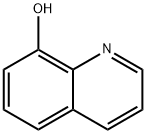
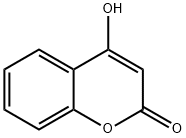
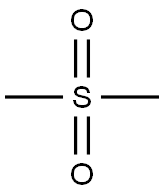




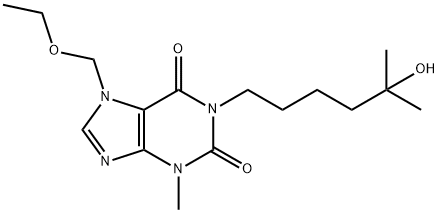
You may like
-
 55441-95-7 2 2-BIS(2-HYDROXYETHOXY)-1 1-BINAPHTHYL 99%View Details
55441-95-7 2 2-BIS(2-HYDROXYETHOXY)-1 1-BINAPHTHYL 99%View Details
55441-95-7 -
 181228-33-1 99%View Details
181228-33-1 99%View Details
181228-33-1 -
 Ste-Glu-AEEA-AEEA-OSUView Details
Ste-Glu-AEEA-AEEA-OSUView Details
1169630-40-3 -
 1446013-08-6 Fmoc-His-Aib-OH TFA 98%View Details
1446013-08-6 Fmoc-His-Aib-OH TFA 98%View Details
1446013-08-6 -
 127464-43-1 99%View Details
127464-43-1 99%View Details
127464-43-1 -
 Chloro Uracil 99%View Details
Chloro Uracil 99%View Details
1820-81-1 -
 2-ETHYLPYRIDINE 100-71-0 99%View Details
2-ETHYLPYRIDINE 100-71-0 99%View Details
100-71-0 -
 13162-05-5 99%View Details
13162-05-5 99%View Details
13162-05-5